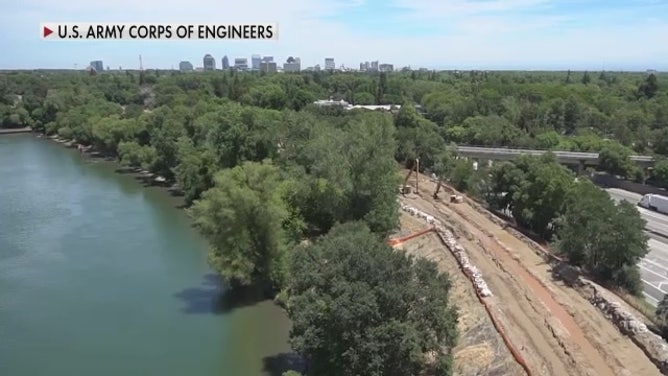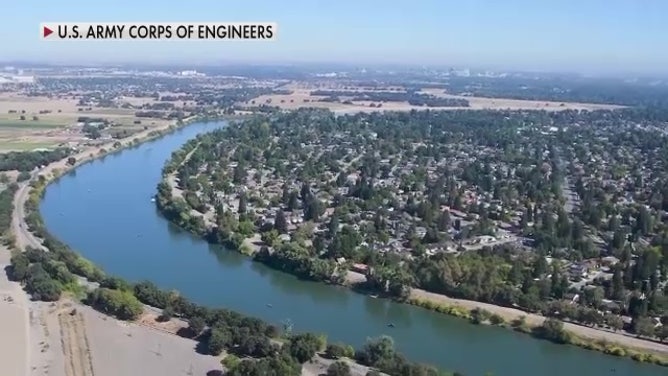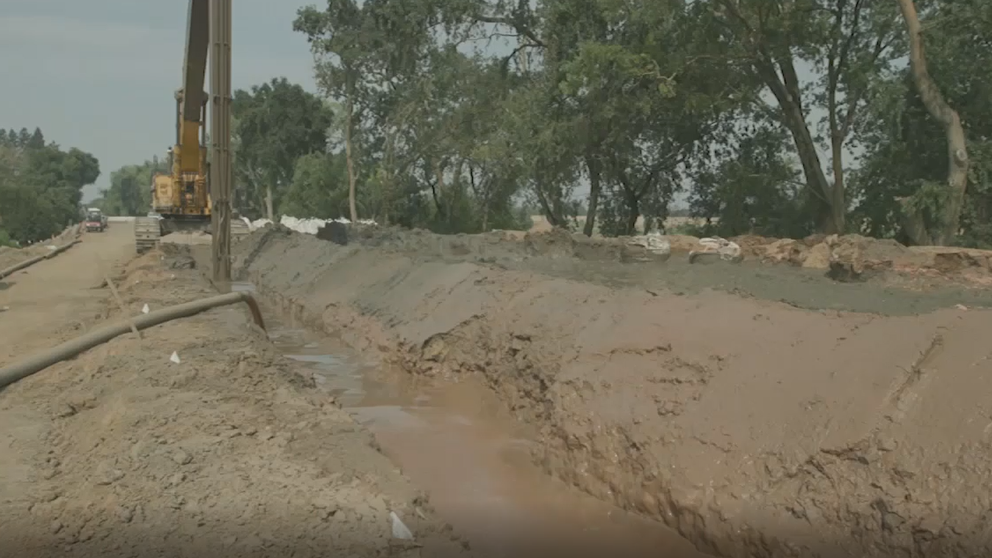'We would all be under water': $1.8 billion Sacramento levee project aims to prevent disastrous flooding
The project is aimed at improving Sacramento's aging levee system that if it failed, could leave 500,000 in the path of floodwaters.
Critical upgrades being made to Sacramento's levee system
It’s an imperitave tool that keeps floodwaters at bay and if it failed, hundreds of thousands of people would be at risk.
SACRAMENTO, Calif. -- Levees are an imperative tool that keeps floodwaters at bay, and if they fail, hundreds of thousands of people would be at risk.
That's why Sacramento is in the midst of a $1.8 billion project aimed at improving their aging levee system that is holding back the American and Sacramento Rivers. They're building an underground wall that once finished, it'll be completely hidden to the eye.

Levy along the Sacramento River
(Courtesy: Army Corps of Engineers)
"Where we are putting in some slurry, some bentonite and some material that is going to mix in with the soils, and basically it's going to harden and create a wall up to 90 feet deep in this area," says Beth Salyers with the Army Corps of Engineers. "And that wall will prevent the water from seeping through and underneath this levee."
Salyers says Sacramento is one of the most at-risk areas in the U.S. for catastrophic flooding.
Near the Sacramento River levee sits a neighborhood where many of the houses sit below the water line. Up to 500,000 people could be in the path of floodwaters if that levee were to fail.

The Sacramento River
(Courtesy: Army Corps of Engineers)
"We would all be under water," Salyers said. "So that is why we need to improve our levee systems. We have seepage issues, we have erosion problems, and those are all weakening the levees. And we are strengthening them to protect us."
Warm, atmospheric rivers strain rivers' capacities
Todd Fong is one of those people living just steps away from the levee.
"The levees are pretty safe for us, so we enjoy going up and walking along the levee, taking our dog for walks and things like that," Fong said. "And for the most part, they've done a lot to shore up the levee to make sure it's safe for us."

Construction project for the levy along the Sacramento River
(Courtesy: Army Corps of Engineers)
Though there are times when the levee system here gets pushed to its limits -- especially in the spring when warm, tropical moisture-laden atmospheric rivers drop a lot of rain and quickly melts snow in the nearby Sierra Nevada Mountains.
Typically flooding occurs then when there’s too much water in the reservoirs flowing off the Sierra and they have to do releases, causing the Sacramento River to swell, according to the National Weather Service in Sacramento.
"Yeah, it's been up at times up to like four or five feet, you know, towards the edge," Fong said. "And it gets kind of scary."
Flooding is a natural part of the Sacramento Valley, and attempts to control the water here date back to the 1800s.
"Back in the Gold Rush era days (are) when the settlers at the time realized there was flood issues in the area after the first big flood in 1850, a year after the gold rush started," said Hans Carota with the Army Corps of Engineers. "And so the settlers would just start building the mounds of dirt up higher around their individual properties to protect themselves."

Construction project for the levy along the Sacramento River
(FOX Weather)
But that meant neighbors would flood each other out. So the state stepped in around the turn of the century, and eventually the federal government got involved in the 1940s, leading to the levee system of today.
"The challenges we face when we're working on such a piece of infrastructure is at any time really when you're digging in the ground, is you never know what you're going to encounter when you're actually digging in the ground," Carota said.
That’s because before settlers came to the area, Native Americans lived along the banks of the river.
"So we work with the tribes in the area and work with archeologists to either document the finds where they are, or actually exhume them or remove the materials and relocate them to another area," Carota said.
Meaning not only is the Sacramento levee system a critical piece of infrastructure, it's also a piece of history.
"This is one of the best things about our job is that we get to do really cool construction work," Salyers said. "We get to see part of the Sacramento history; be part of it, but also improve the lives of the people that live here."
And with the work being done here, it's a piece of history that those with the Army Corps of Engineers hope will continue to keep the waters back for years to come.
